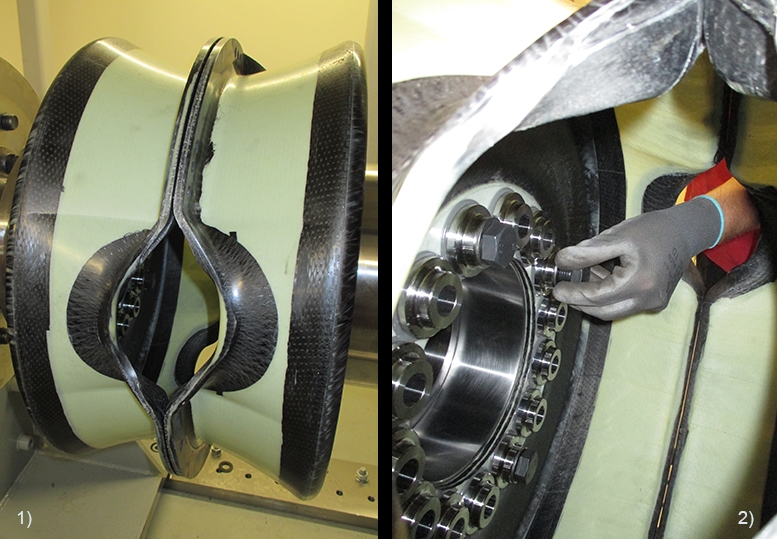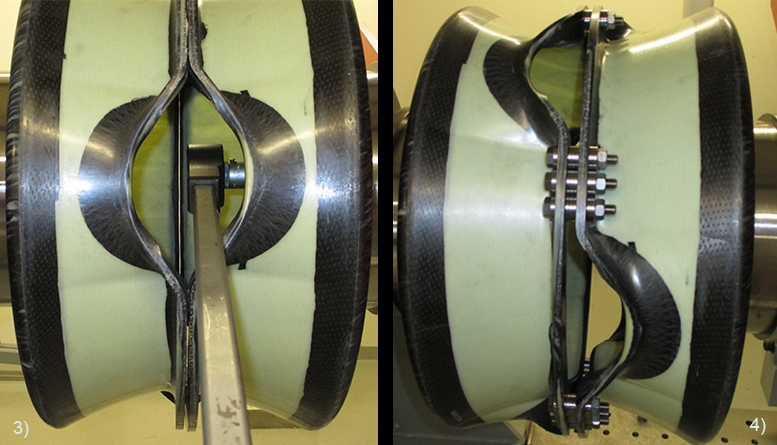SHARE ON:
Link copied!
The standard design of the patented Gesilco® Butterfly “BF” coupling consists of two membranes, an intermediate shaft and two flanges. Membranes, intermediate shaft and flanges are manufactured as a single piece made of advanced composite material. The halves of the coupling are bolted together at the flanges with fitted bolts. By use of variable thickness spacers, installation tolerances and centering recess can be compensated. At the inner radius the coupling is connected to the driving and driven components by pre-stessed screws. Up to now, one of the halves had to be connected with screws from the outer side of the flange. This required some extra space. In order to reduce the length of the coupling we had to find out how it would be possible to open the coupling from the intermediate shaft. This would mean that all bolts have to be installed from the inside of the coupling. This problem was solved by an innovative design, including openings in the intermediate shaft, as shown in the image above.
The following pictures show the assembly procedure:
This assembly process was chosen because of the reduction of the stiffness caused by the openings. In addition, the level of friction in the connection of the coupling halves has been increased, which allows a smaller pitch circle thus a longer membrane with increased displacement efficiency. A logical consequence is to have a shorter installation length and therefore less weight with the same displacement efficiency of the whole coupling. In addition the structure-borne noise of the coupling has been investigated and minimised. First couplings with a diameter of 630 mm and 20KNm torque will be available in the new design. Other coupling sizes will follow.

